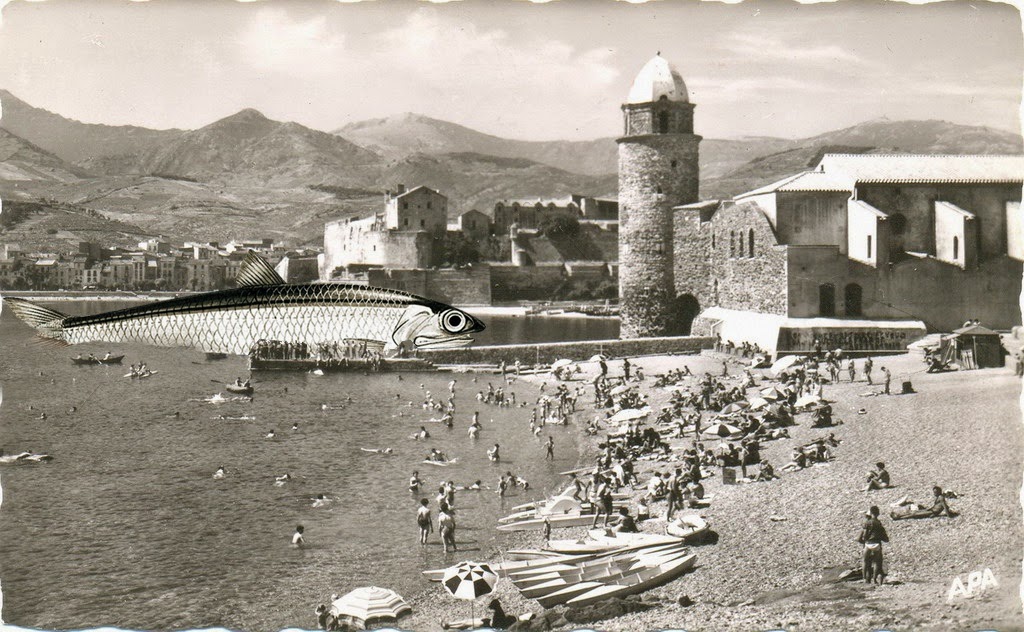
Take some thick slices of country bread, even stale (garlic cloves but unpeeled) ripe tomatoes, olive oil, sea salt (and pepper) ... it is of course understood that the success of your tomato bread depends largely on the quality of its ingredients; ripe, the best variety is the tomato Tomàtigues de Ramellet , extra virgin olive oil, the bread must be dense but not impenetrable ...
At the same time national dish and Catalan cultural heritage the tomato bread awakens nostalgic passion and revives romantic reminiscences. It is so inseparable from the Catalan daily life that some talk of an immemorial tradition. But in reality, the tomato, an american arrival, now so popular in Catalan cuisine, arrived during the 18 th century and the glorious union with the bread probably dates from the second half of the 19 th century.
Some like it with garlic, some purists admit only four ingredients. If your bread is fresh, grill it, if your bread is old, raise it to the tomato. If you prefer garlic, also prefer toast. Rub it or not with a clove of garlic and then with tomato halves. There, everything must go; juice, pulp, seeds. start by rubbing the crust and the crumb after, then sprinkle generously with olive oil. Salt (and pepper) are all you now need to round off this simple work of culinary art, gently squeeze the bread between your fingers before you eat alone or accompanied. In the infinite realm of tapas, the tomato bread is king. Lonely but also incomparably friendly, it can not only be eaten alone and but also accommodates all the trimmings but is still mostly an excuse to eat more bread with tomato.
To quote Manuel Vasquez Monatalban, "It makes sin simple and cheap ... do not make love, make tomato bread ... eat bread with tomato. Anywhere and in any circumstances. Bread, tomato and salt. And after sex, bread with tomato and a little sausage. "
Take "Pa amb tomàquet" by Jaume Fàbrega for a read on the beach and "I pratica teoria del pa amb tomàquet" by Leopoldo Pomes.
For your next vacation consider the Fira del pa amb tomàquet in Santa Coloma de Farners, and for all your comments on tomato bread, how do you eat it? with or without garlic? with what, who, when and where? ... we will attentively listen to your comments !
 Come learn Catalan cuisine in a traditional fisherman's house in the village, participate in the preparation of your meal in a friendly atmosphere and taste what has been fished, raised, grown, vinified and developed by the "small" producers closest to home, in the greatest respect for the environment and produce, and then meet them around the table…
you are welcome in our kitchen, put one of our aprons upon arrival, we will quickly tell you all about the market-based menu, depending on the weather and fishing… Locally caught fish, lamb, beef, veal raised in the Albères, poultry and eggs from really outdoors, seasonal fruit and vegetables, natural wines, saffron, vinegars and olive oils… take a knife and slice, cut, mix, assemble, talk, listen, share, laugh, learn, season, simmer, deglaze, relax…
EAT WELL AND DRINK GOOD!
Come learn Catalan cuisine in a traditional fisherman's house in the village, participate in the preparation of your meal in a friendly atmosphere and taste what has been fished, raised, grown, vinified and developed by the "small" producers closest to home, in the greatest respect for the environment and produce, and then meet them around the table…
you are welcome in our kitchen, put one of our aprons upon arrival, we will quickly tell you all about the market-based menu, depending on the weather and fishing… Locally caught fish, lamb, beef, veal raised in the Albères, poultry and eggs from really outdoors, seasonal fruit and vegetables, natural wines, saffron, vinegars and olive oils… take a knife and slice, cut, mix, assemble, talk, listen, share, laugh, learn, season, simmer, deglaze, relax…
EAT WELL AND DRINK GOOD!




